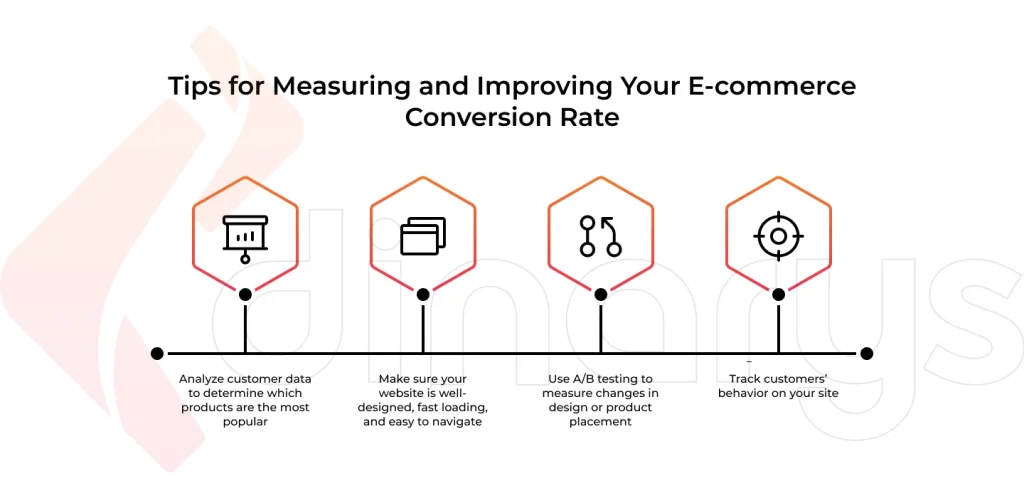E-commerce has revolutionized the way businesses operate, offering unprecedented opportunities to reach a global audience. However, to succeed in the competitive online marketplace, it’s crucial to have a well-defined e-commerce strategy. This comprehensive guide will help you create a robust strategy to maximize your ROI.
Understanding Your Target Audience
- Identify Your Ideal Customer:
- Create detailed customer personas, including demographics, psychographics, and buying behaviors.
- Understand their pain points, desires, and motivations.
- Conduct Market Research:
- Analyze market trends, competitor strategies, and customer preferences.
- Identify potential niches or underserved markets.
- Utilize Analytics:
- Use analytics tools to track website traffic, customer behavior, and conversion rates.
- Gain insights into customer preferences and tailor your marketing efforts accordingly.

Building a Strong Brand Identity
- Develop a Strong Brand Story:
- Create a compelling brand narrative that resonates with your target audience.
- Define your brand’s unique selling proposition (USP) and value proposition.
- Consistent Branding:
- Maintain consistent branding across all touchpoints, including your website, social media, and marketing materials.
- Use a consistent color palette, typography, and messaging.
- Build Brand Awareness:
- Implement a robust marketing strategy, including content marketing, social media marketing, and paid advertising.
- Leverage influencer marketing and partnerships to reach a wider audience.
Creating a User-Friendly E-commerce Website
- User-Centric Design:
- Prioritize user experience (UX) and user interface (UI) design.
- Create a clean, intuitive, and visually appealing website.
- Mobile Optimization:
- Ensure your website is mobile-friendly to cater to the growing number of mobile shoppers.
- Fast Loading Speeds:
- Optimize website performance to reduce page load times and improve user experience.
- Secure Checkout Process:
- Implement robust security measures to protect customer data and build trust.
- Clear Call-to-Actions:
- Use clear and compelling calls-to-action to guide customers through the buying process.
Effective Marketing Strategies
- Search Engine Optimization (SEO):
- Optimize your website and content for search engines to attract organic traffic.
- Use relevant keywords, meta descriptions, and header tags.
- Build high-quality backlinks to improve your website’s authority.
- Pay-Per-Click (PPC) Advertising:
- Use PPC advertising platforms like Google Ads and social media ads to target specific audiences.
- Set precise targeting parameters and track your return on investment (ROI).
- Social Media Marketing:
- Leverage social media platforms to engage with your audience, share valuable content, and drive traffic to your website.
- Utilize social media advertising to reach a wider audience.
- Email Marketing:
- Build an email list and send targeted email campaigns to nurture leads and drive sales.
- Personalize your email content to increase engagement and conversion rates.
- Content Marketing:
- Create high-quality content, such as blog posts, articles, and videos, to attract and retain customers.
- Use content marketing to establish your brand as an authority in your industry.
Optimizing the Customer Experience
- Personalized Recommendations:
- Use customer data to personalize product recommendations and marketing messages.
- Seamless Checkout Process:
- Simplify the checkout process to minimize cart abandonment.
- Offer multiple payment options and secure checkout gateways.
- Excellent Customer Service:
- Provide prompt and efficient customer support through various channels, such as live chat, email, and phone.
- Resolve customer issues quickly and effectively.
- Loyalty Programs:
- Implement loyalty programs to reward repeat customers and encourage repeat purchases.
Measuring and Analyzing Performance
- Key Performance Indicators (KPIs):
- Track key metrics such as website traffic, conversion rates, average order value, and customer lifetime value.
- Use analytics tools to monitor your website’s performance and identify areas for improvement.
- A/B Testing:
- Experiment with different marketing strategies and website elements to optimize your results.
- Continuously test and refine your approach to maximize ROI.
By following these strategies and continuously adapting to the evolving digital landscape, you can create a successful e-commerce business that drives sustainable growth and maximizes your return on investment.





Leave a Reply to Judith3726 Cancel reply